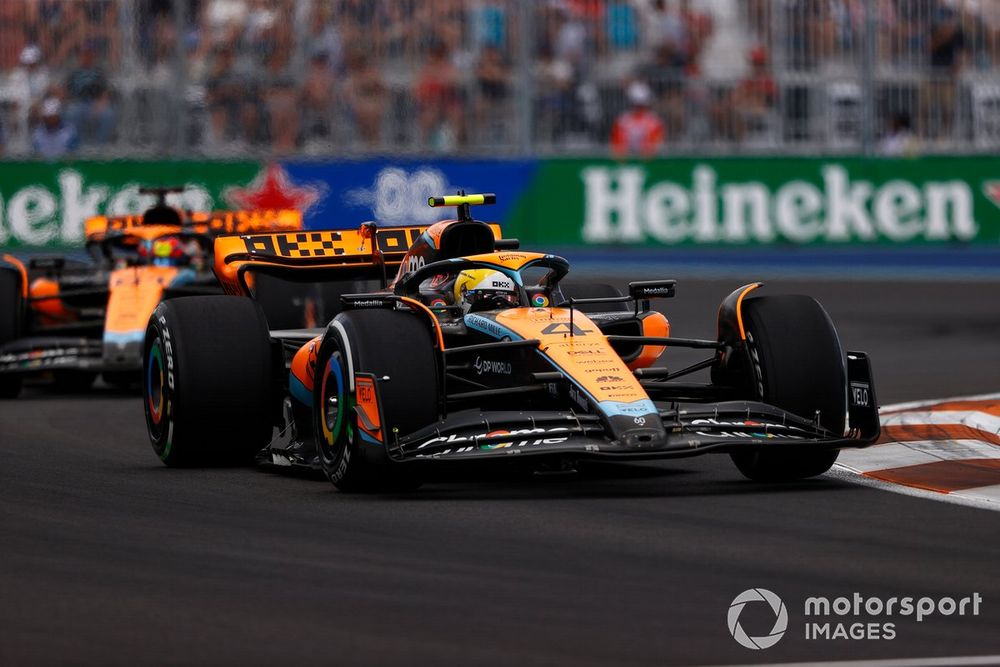Team boss Andrea Stella reckons despite the floor damage sustained by Lando Norris and a brake-by-wire failure for Oscar Piastri, a Miami result of 17th and 19th is a “reality check”.
The ‘supertimes’ metric, which compares the fastest lap set by each team during a full race weekend, listed McLaren as the slowest of the 10 entries in Florida with a 1.82% score.
This poor showing has been blamed on the low-grip resurfaced asphalt, while a fifth-placed result in the supertimes from the previous round in Baku might be attributed to only losing out in the low-grip castle section.
These areas highlight the deficiencies of the MCL60 car during off-throttle and off-brake situations, according to former race engineer Stella.
The Italian explained: “There’s a trend emerging. This trend is that when the grip is high, our car gains competitiveness.
“We think this trend is related to the fact that the lower the grip, the more you have to spend time off brakes, off throttle. This is a situation in which our car doesn’t work very well.
“[When] temperatures were low – track temperature, ambient temperature – the car was much happier. The drivers could attack.
“If you attack the braking, then you minimise this phase in mid-corner in which you roll out the brakes, out of the throttle. Immediately we gain competitiveness.
“If we look at Baku, for instance, with the new Tarmac this year, the grip was high and in all the sections where you can brake hard, short corners like Turns 1 and 2, we were competitive. Very short time off throttle, off brakes.
Lando Norris, McLaren MCL60, Oscar Piastri, McLaren MCL60
Photo by: Andy Hone / Motorsport Images
“But if you see the castle section where you have to roll, we were not very competitive even in Baku. So, this is a trend.”
Stella emphasised the significance of McLaren isolating and understanding this trend so that the restructured technical department could eliminate it with in-season developments.
He continued: “This trend is important that it is understood because somehow it leads the development direction as well.
“We knew that with the Baku upgrade [tweaked floor] we added some downforce, but we didn’t change the characteristics of the car.
“So, I’m not too surprised that in these low grip conditions, spending a lot of time out of brakes, out of throttle, we lose relative competitiveness.”
Stella said that having identified the weakness, the team could offset the restricted CFD and wind tunnel…
Click Here to Read the Full Original Article at Motorsport.com – Formula 1 – Stories…

